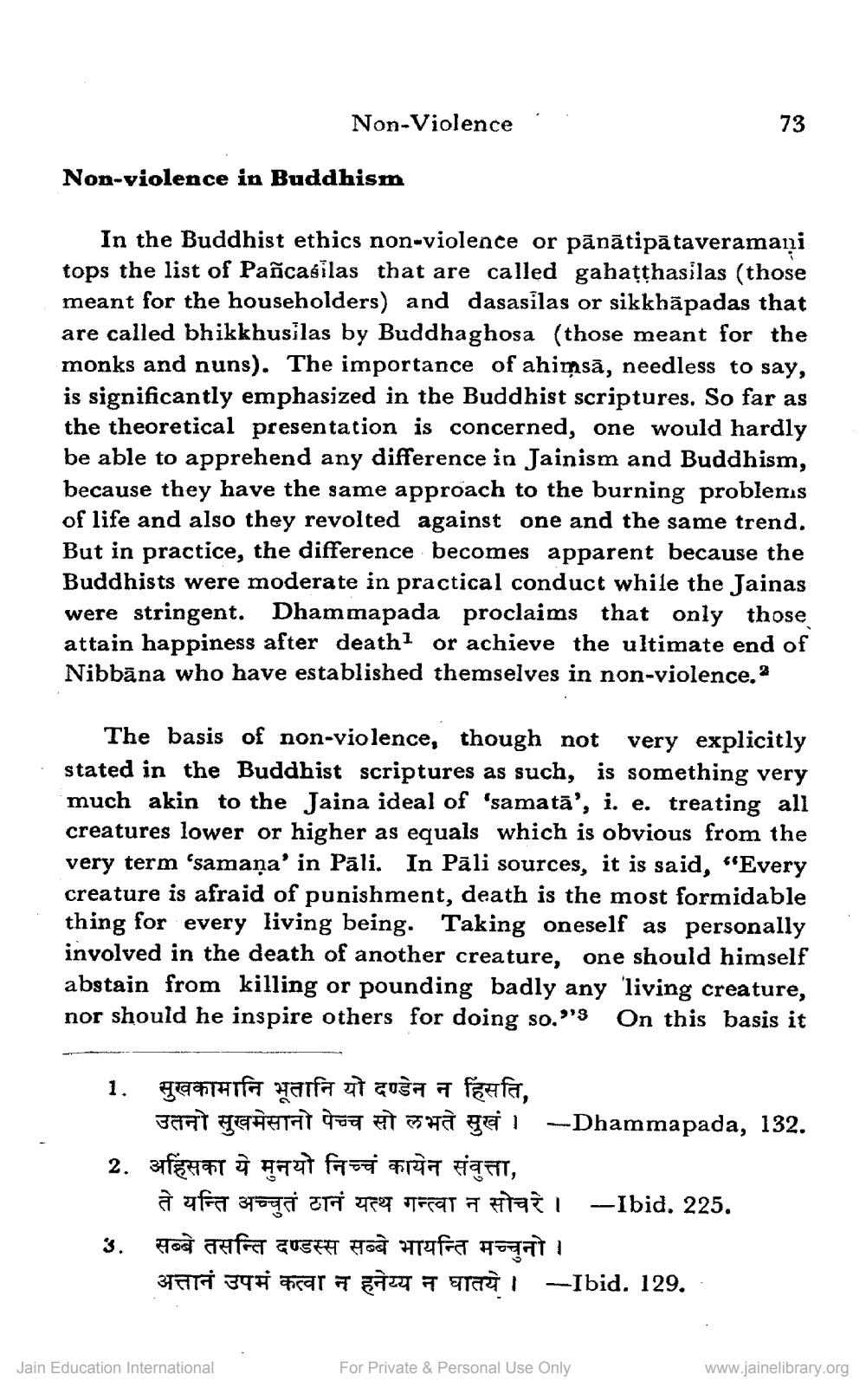________________
Non-Violence
73
Non-violence in Buddhism
In the Buddhist ethics non-violence or pānātipātaveramani tops the list of Pancasilas that are called gahatthasilas (those meant for the householders) and dasasilas or sikkhāpadas that are called bhikkhusilas by Buddhaghosa (those meant for the monks and nuns). The importance of ahimsā, needless to say, is significantly emphasized in the Buddhist scriptures. So far as the theoretical presentation is concerned, one would hardly be able to apprehend any difference in Jainism and Buddhism, because they have the same approach to the burning problems of life and also they revolted against one and the same trend. But in practice, the difference becomes apparent because the Buddhists were moderate in practical conduct while the Jainas were stringent. Dhammapada proclaims that only those attain happiness after death? or achieve the ultimate end of Nibbāna who have established themselves in non-violence.
The basis of non-violence, though not very explicitly stated in the Buddhist scriptures as such, is something very much akin to the Jaina ideal of 'samatā', i. e. treating all creatures lower or higher as equals which is obvious from the very term 'samaņa' in Pāli. In Pāli sources, it is said, “Every creature is afraid of punishment, death is the most formidable thing for every living being. Taking oneself as personally involved in the death of another creature, one should himself abstain from killing or pounding badly any living creature, nor should he inspire others for doing so." On this basis it
1. qamilo patra a aga a farfa,
JAFT TCHATAT Taa at hàgeil -Dhammapada, 132. 2. zifuar Û Hayat faptei pra fiant,
à afa 37CT TT 472 teras 7 utaêl -Ibid. 225. 3. सब्बे तसन्ति दण्डस्स सब्बे भायन्ति मच्चुनो।
TFTİ 34 # Focar TZUT 7 STATI - Ibid. 129.
Jain Education International
For Private & Personal Use Only
www.jainelibrary.org




